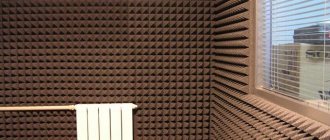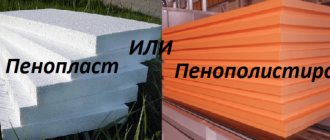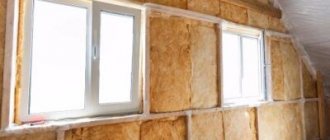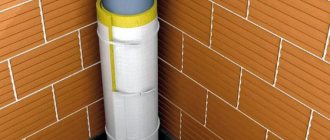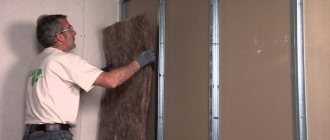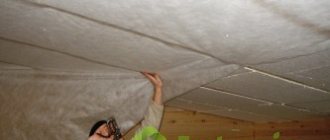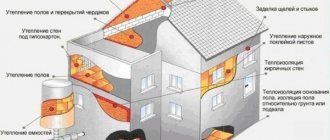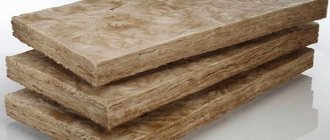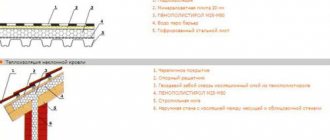Benefits of cork flooring
- Original appearance.
- Environmentally friendly material that does not rot. It also does not absorb unpleasant odors.
- High noise insulation. The sound absorption coefficient at a frequency of 2.1 kHz is 0.85. For common similar materials it is about 0.7. Low frequency noise and vibration are reduced to a lesser extent.
- Low thermal conductivity. The material is widely used for thermal insulation of premises. Compared to other materials, a 3 cm thick cork covering creates the same thermal protection as 10 cm of pine or 20 cm of cellular concrete.
- The material is not electrified and does not attract dust.
- High strength, wear resistance and elasticity. Cork is able to restore its shape after loads due to its high elasticity. However, traces of furniture and sharp objects remain on the coating, which indicates the need to handle it carefully.
- Cork material treated with special substances does not burn; it is classified as non-flammable substances.
- Cork sound insulation does not require special care, and wet cleaning is possible if the coating is protected by a layer of varnish.
Getting a technical plug
Waste cork bark is crushed and then pressed and steamed. Sometimes binders are used, but you can do without them, since the cork contains natural glue.
The technology for making cork products is called agglomeration. Moreover, they differ in color: dark is obtained from the bark of the trunk, and light is obtained from the bark of the branches.
Dark and light agglomerate
Note! The cellular structure of the material provides high sound insulation and also does not allow gas and water to pass through.
Types of cork coverings
As sound insulation, technical cork is used in several categories of coatings. It can be applied to surfaces in liquid form or attached as a sheet or panel.
Liquid coating
Finely dispersed cork with solvent and dyes is applied to building surfaces like regular paint. After drying, the result is a coating for walls and ceilings that has all the properties of cork material.
The cork is applied by spraying using a spray gun. The thickness of the coating with a standard two-layer application is 2-6 mm.
Panels
Cork panels are laid or glued to surfaces. The following materials are used for their manufacture:
- agglomerate, pressed from crumbs, but may contain 4% acrylic binder;
- an agglomerate covered with cork veneer and a protective layer applied on top.

Veneer can be made from whole pieces of bark. Such products are of the highest quality and have a high price. The panels can be connected to each other using locks. Here they do not have to be glued, although it is possible to obtain reliable connections and eliminate gaps.
Technical coverage
Products are produced in the form of plates and rolls. They are intended mainly for insulation and sound insulation. The coating is used when creating a backing for wallpaper for walls or the main floor. The thickness of the rolls ranges from 2 to 10 mm.
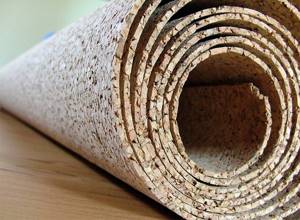
Rolled cork for flooring
Tools and materials
For work you will need the following:
How to fix and cover a balcony ceiling with PVC panels with your own hands
- sandpaper or sander;
- rubber roller;
- technical roll stopper;
- ceiling primer;
- stationery knife or regular scissors;
- dry rags;
- putty;
- containers for primer and solution;
- wool roller;
- notched spatula;
- a roller with a long handle or a brush for priming;
- chop cord;
- roulette;
- pencil;
- moisture-resistant glue;
- set of spatulas;
- ladder.
Attention! Water-based contact adhesive is suitable for gluing cork insulation.
Like any natural material, after purchase the cork should lie for a couple of days in the room where it will be glued. During this time, the material will adapt to the microclimate in the room and will not deform after installation.
Soundproofing the floor
Sound insulation with technical cork is made from a substrate under panel parquet, parquet boards, laminate. Cork underlay is used for linoleum if it is hard enough. It is ideal as a base for hard coverings, since it fully satisfies the requirements of hygroscopicity, high sound absorption, leveling of small irregularities, and also allows you to lay the floor evenly. Mostly rolled material is used, which is well pressed down with panels or tiles on top.
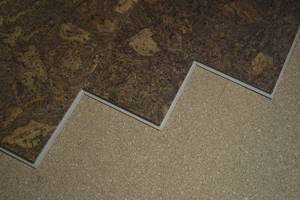
Cork underlayment under flooring
Before laying, the concrete slab is prepared: debris is removed, cracks are sealed, and unevenness is removed. Along the perimeter of the room, on the lower part of the wall, it is necessary to glue sound insulation tape. If thermal insulation is not required, the first layer of noise insulation based on polyethylene foam is laid on the concrete. The joints of the film are taped with tape.
A 3 cm thick polypropylene backing or plywood is laid on the sound insulation surface in a checkerboard pattern . It is better to apply 2 layers of panels, but so that the joints do not coincide. A rolled cork backing is laid on the plywood. Docking is done using tape.
The last step is installation of the finishing coating. Then the excess soundproofing tape around the perimeter is trimmed and the baseboard is installed.
Cork flooring can be installed as a topcoat and will also have sound insulation properties. It is produced in the form of tiles that can be glued to the base. They can be of different colors or with a pattern. The floor is water resistant and can be used in any room.
Cork material is used as veneer glued onto MDF. Both of them have noise-insulating properties. They are made in the form of panels, which are assembled in a similar way to interlocking laminate. The disadvantage is that MDF swells when exposed to water. When assembling the floor, the sheets of the next row are installed with tenons into the grooves, first at an angle of 300, and then lowered with pressing until a tight connection is formed.
Cork insulation installation options
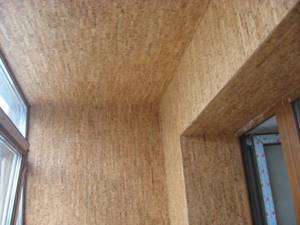
Cork ceiling sound insulation is mounted on the ceiling surface in one of two ways:
- The material is glued directly to the ceiling to dampen echoes in the room and prevent sound from spreading outside the room with a home theater or music center.
- The second option is chosen if you want to protect yourself from external noise coming from neighboring rooms and improve the absorption of sound waves coming from your apartment. In this case, the entire structure will consist of a supporting frame made of wooden blocks, thermal insulation material, plasterboard and cork. The frame is built on the base ceiling. The selected insulation is placed between its guides. The bottom of the lathing is hemmed with plasterboard, which is lined with technical cork.
Each of the options for installing cork covering on the ceiling surface involves gluing the material. That is why we will describe step by step the technology for installing a rolled cork with glue.
Soundproofing in a house with wooden floors and materials for soundproofing the ceiling
Sound insulation of walls
Cork is good for walls. Before applying it, all cracks in the walls should be repaired. Sound travels well through the openings for sockets and switches. If there are voids, they are filled with dense mineral wool, after which the hole is sealed with cement mortar or putty. After this, the socket is installed in place.
Might be interesting
Thermal insulation
Distinctive features and variety of ceiling tiles…
Thermal insulation
Features and use of mineral wool
Noise insulation
How to soundproof a balcony roof yourself?
Noise insulation
Soundproofing sewer pipes in an apartment
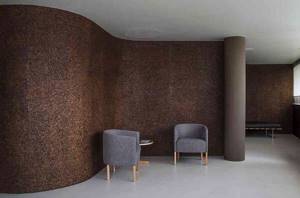
Sound insulation of walls
In panel houses, noise is transmitted at the joints of the slabs. It can be significantly reduced if you remove the plaster at the corners and fill the joints with foam. This is not necessary in monolithic structures.
Coating features
Before gluing the cork, the walls are primed to increase the strength of the connection. The optimal thickness of the panels is 3 cm. If it is smaller, the wall covering does not provide the proper sound insulation effect, and making it thicker is unprofitable, since a plasterboard structure with mineral wool panels wins in terms of price/quality ratio. Here you can combine it by gluing cork wallpaper onto a soundproofing plasterboard wall as a decorative finish.
Wallpaper is made on a paper base, onto which varnish is first applied, and then agglomerated cork veneer 1 mm thick is glued.
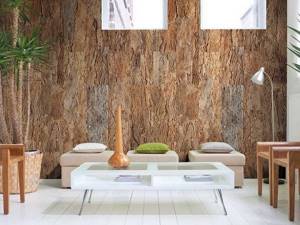
Wallpaper made from cork
Note! For a large room with an area of more than 20 m2, the reduction in volume will be unnoticeable, but for 12 m2 this is already significant.
A thin layer of cork reduces noise levels from outside if you follow the following rules:
- Multi-layering improves sound insulation. A thin protective coating is unlikely to help, but a wallpaper backing made from technical cork will provide some protection from sounds. The result is also obtained by a gypsum plasterboard structure with cork wallpaper glued to it on the outside and a layer of thermal insulation applied from the inside by spraying. You just shouldn’t count on wallpaper, due to its small thickness. They will only muffle the sounds inside the room a little.
- Additional coating of the joints of cork tiles allows you to obtain a seamless coating.
- The joints of the upper layers should not coincide with the lower ones.
Important! Soundproofing with cork is more effective from the outside than from the inside: for the walls of a room with cork covering, neighbors will hear much less noise from it than in the opposite direction.
Is it possible to use such sound protection if it has a directional effect? Obviously, yes, since there is no need to turn down the sounds of the TV or audio equipment in the evenings, and children can calmly play musical instruments.
Cork tiles should be glued to the base in a checkerboard pattern. If they are thin, make a two-layer coating. In this case, it is better to make the outer layer with veneer, and for the inner layer, technical cork is quite suitable.
Choosing the type of cork covering
There is no particular variety in the shape of the products. They are available in rolls and sheets. The sheets are very diverse. Their thickness ranges from 2 mm to 50 mm. Panels without veneer are made of black or white agglomerate. The first one is more used for internal layers and substrate, and the last one is better suited as a finishing material.
The top of the cork can be covered with other decorative material. The simplest is a layer of varnish. In rooms with high humidity, the walls are coated with sealant varnish. It is applied with a soft roller.
After hardening, the wall is not afraid of wet cleaning. If the protective layer is damaged, it can be restored by reapplying varnish.
How can you isolate yourself from noise?
Today, no matter what materials lie on the shelf, their essence boils down to one of the three pillars on which, as we know, the Earth rests:
- The first large group includes cotton wool of various origins. First of all, these are, of course, minerals and glass. The first attempts to invent something in this direction were made more than a century ago, but not for sound insulation. The ancient encyclopedia of English industry even contains instructions. The first experiments were based on observations of volcanic activity and were not entirely successful. It was noticed that fast air currents, sweeping over the crater of a volcano, pull out the thinnest flexible threads. Attempts were made to make mineral wool on our own in exactly the same way. From the bellows, air rushed at high speed over a bath of molten rocks. As a result, not only was it possible to obtain soft mineral wool, but the workshop workers also developed lung diseases, in many cases fatal. It got to the point where people went out to demonstrate, refusing to produce what we are going to use today to soundproof our apartments. A lot of time has passed, the technology has been fine-tuned, and today you can see in photographs from the thirties of the last century satisfied scientists pressing a white fluffy ball to their cheek. You would never think that this is mineral wool.
- The second large group includes structures based on changing the density of the layers of a building sandwich. These can be different materials. We classify them as a separate group because these are layered structures for sound insulation that have similar characteristics. The composition may include, for example, the same mineral wool. The difference is that a relatively light insulator layer is complemented by a surface frame of relatively dense material. In this case, not only good sound insulation is provided, but also the surface installation of drywall is simplified in many ways. At the same time, the process of installing sound insulation on a wall is accompanied by a number of features. In particular, a special noise-insulating tape must be laid around the perimeter. But that's not all. Each docking unit is mounted to a load-bearing wall using special fasteners that come complete with wall soundproofing material. At the same time, the strength of the structure remains in doubt, because mineral wool is not very rigid. If in a normal case we make the lathing according to our own requirements, here we are forced to trust the manufacturer of sound insulation for the walls. This is especially evident in such cases as, for example, the need to hang a plasma panel with a large diagonal on the wall. A TV can have a mass of about one hundred kilograms. It is clear that the wall in this case should not fail.
- The third group includes various polymer materials. Sound insulation for walls can be supplied in the form of slabs. For flooring, the polymer is shipped in granular form. In this case, it is something resembling fish eggs with large grains. A layer of sound insulation of a certain thickness is spread on the floor, which polymerizes within a few hours. A screed is applied on top. In this case, it is recommended to use a floating floor design together with sound insulation. We tend to distrust any polymers in the design of our premises. Anyone who wants to soundproof walls with foam plastic should know that after a number of years, artificial materials undergo a process of decay. All this looks beautiful on the screen, but in practice it requires replacement after a fairly short period of time.
You may have noticed that we didn't say anything about balsa wood. Why? We tend to classify this sound insulator as belonging to the second group. That is, the quality of the coating is achieved due to different densities of the layers. Be that as it may, balsa wood can really be considered as separate options for sound insulation. Therefore, it would not be a mistake to separate this class into a separate group. What would we say about balsa wood, would it be an acceptable option in this case?
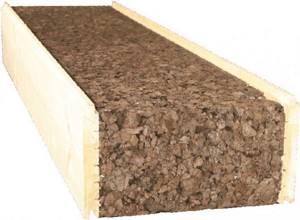
Cork as an insulator
Ceiling soundproofing
The soundproofing layer on the ceiling serves to get rid of the clatter of neighbors living above.
A common way is to create a suspended ceiling, which will require sacrificing the volume of the room. A thin cork coating will not create sound insulation; it is advisable to use it together with other materials. When using a multilayer structure of different densities, the soundproofing effect increases. If only cork plates are used, their thickness should be at least 3 cm.
Cover installation procedure:
- The ceiling is being leveled. It is not recommended to use gypsum putties.
- The surface is degreased and a primer is applied, which can be an aqueous solution of glue or a special cement-based primer.
- The surface of the ceiling is divided into 4 identical sections, its center is located.
- The central tile is applied and outlined. Then places for the rest are marked.
- The adhesive is evenly applied to both surfaces, after which the tiles are attached to the ceiling. After finishing the work, you should go over the slabs with a roller, thus ensuring a reliable fit.

Cork ceiling
Frameless ceiling sound insulation systems
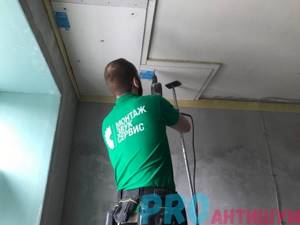
Author: Dmitry Kotov There are two options for ceiling soundproofing: frame and frameless. The first option is applicable in most cases if the apartment has high ceilings. If the ceiling height in the house is small, then the optimal solution would be frameless sound insulation. The frameless method of sound insulation is simpler and more accessible. You can carry out installation work yourself without involving specialists.
If you need to make inexpensive but effective sound insulation, then frameless ceiling sound insulation is the optimal solution in terms of saving time and money. Some types of insulation materials need to be covered with slabs or sheets of drywall.
Caring for cork floors
There may be gaps between the sheets. Strips of cork are inserted into them and glued. The peeled edges are coated with a small brush. Stains are removed only after drying.
Worth keeping this in mind! The service life of the coating increases if protective agents are applied to it, for example, oil-wax. The composition reliably protects the slabs from moisture.
The surfaces are coated with a special varnish based on polyurethane or acrylic. Parquet varnish is not suitable for cork. In the sun, cork slabs quickly fade; they must be protected from direct rays.
Which plug to choose
The highest quality cork is produced in Portugal. It is better not to buy Chinese products. Thin coatings are very easy to check. To do this, they should be looked at through the light. If the sun's rays break through the layer, it is better not to take the material, its quality is low.
The largest range of cork coverings is represented by (Portugal). The Ibercork brand produces technical cork, as well as wall and floor coverings. Interesting design solutions are presented. Multilayer floating floor coverings are produced by Baumtex, but they are expensive. Panels with solid veneer are also expensive.
Adhesive panels are cheaper than those connected under locks. The agglomerate has the lowest prices and is mostly used as a substrate.
Protecting walls from noise and cold
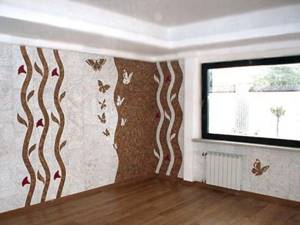
The construction market has a large selection of materials to eliminate extraneous sounds. They all differ in their characteristics, manufacturer, and disadvantages. And before carrying out sound insulation, I would like the material to be not only a sound absorber, but also an insulator. Cork soundproofing of walls is the best option.
Reviews for cork panels
In the reviews, the advantages of cork sound insulation correspond to those given earlier. The disadvantages of cork are as follows:
- Slow restoration of structure after creasing.
- The pressure of heavy furniture leaves dents.
- Thin cork coverings alone do not give much effect, although they have an impressive appearance and also have the property of good thermal insulation.
- Direct exposure to sunlight leads to fading of the surface.
- The glued tiles cannot be moved after a short time.
- High prices compared to other materials. This type of coverage is not available to the majority of users. It is even more expensive than parquet.
